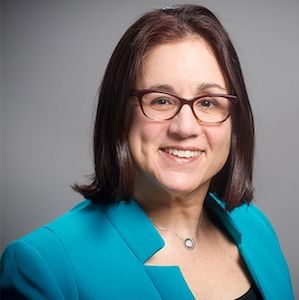Video
Use of Crizanlizumab for Pain Crisis Associated With SCD
Key opinion leaders focus on the use of crizanlizumab for painful crisis frequency in sickle cell disease.
Ifeyinwa Osunkwo, MD, MPH: I’m going to switch this up a little, because we spent a little time talking about voxelotor, L-glutamine, and hemolysis. Can you talk about crizanlizumab? In the same year and same month, crizanlizumab was approved by the FDA to treat sickle cell disease. Can you tell us about the study, what it does, how the medicine works, how it is given, and what your experience is with the receptivity of the medicine among your patient population?
Patrick McGann, MD, MS: It’s a different type of medicine and a different type of patient. It’s directed against pain. It is an intravenous medicine, and you have to get an infusion of every month. It targets something called P-lectin, which we’re describing to patients as it contributes to how sticky your blood cells and vessels are. Sickle blood cells get caught in the blood vessels. And when they stick to one another, they stick to other blood cells, and they stick to the wall of the blood vessels. This P-selectin plays some role in that. This medicine attaches to the P-selectin and theoretically makes the stickiness less sticky. In the phase 2 randomized clinical trial, that showed benefit that got FDA approval. The patients who got the infusion of crizanlizumab had about half as many pain crises as those who received placebo. There is about 3:1.5 or so annualized over the course of a year, which is pretty significant. The patients hear this for sure: It’s an IV [intravenous] infusion, and the patients have to come initially every 2 weeks, but then every month, but it’s only over an hour. It’s usually pretty well tolerated.
P-selectin is involved in the immune system. There is some concern that inhibiting this might cause some immune problems or immune suppression. But this hasn’t seemed to pan out. And it’s starting to get used. I know we’ve used it in many teenage patients who have a lot of pain crises. We started to use it at the beginning of the pandemic to try to keep patients out of the hospital and out of the emergency department [ED] because we’d rather them come to our infusion center once a month than to the hospital. The real-world reports, like the trial, are hit or miss. Some patients certainly do well; others, maybe not. It doesn’t need to have medication adherence every day, like hydroxyurea or voxelotor, but it does need medication adherence to come to the clinic once a month, which is a challenge. There’s no clear guidance.
When a patient misses an infusion, do you restart the clock with every 2 weeks again, to load them up? There have been some reports of patients having acute painful events during or after the infusion. But it seems to be worth a shot for those patients that have a lot of pain. It is downstream, so it probably doesn’t do much for organ damage, or for anemia, or for any of the primary problems of sickle cell disease. It should be adjunctive to hydroxyurea, voxelotor, or something else that targets the actual polymerization of sickle hemoglobin. For patients who struggle with pain, if it has the possibility to reduce that, as Wally Smith mentioned, even by 1 or 1½ crises per year, it’s worth a shot.
Ifeyinwa Osunkwo, MD, MPH: You had mentioned that about some of the disparities that happened with sickle cell disease. Have you found any challenges with getting access to this medicine for your patients, in terms of insurance approval, or sponsoring the infusion room? How is that going?
Patrick McGann, MD, MS: In the pediatric world, we’re a bit luckier, and we have more resources. We have people who can help with some of these barriers. But it’s not easy; these are expensive medicines. It’s not as if you prescribe it and everything is good. Even for an infusion, for as these medicines and new medicines are developed, access and equity have to be a part of the conversation domestically; we’re not talking globally here. All these things are never going to be available in Africa for a long time, I would imagine, though these countries were often involved in these studies. It’s not easy. There are many hoops to go through. I mentioned that we have a lot of resources in the pediatric world. But most sickle cell providers, especially in the adult world, don’t have the time or resources to do that. You’re not going to spend 4 hours on the phone trying to get prior authorization. Therefore, the patient doesn’t get the medicine because of problems that the insurance company causes. Access to these medicines remains quite a challenge.
Transcript Edited for Clarity




